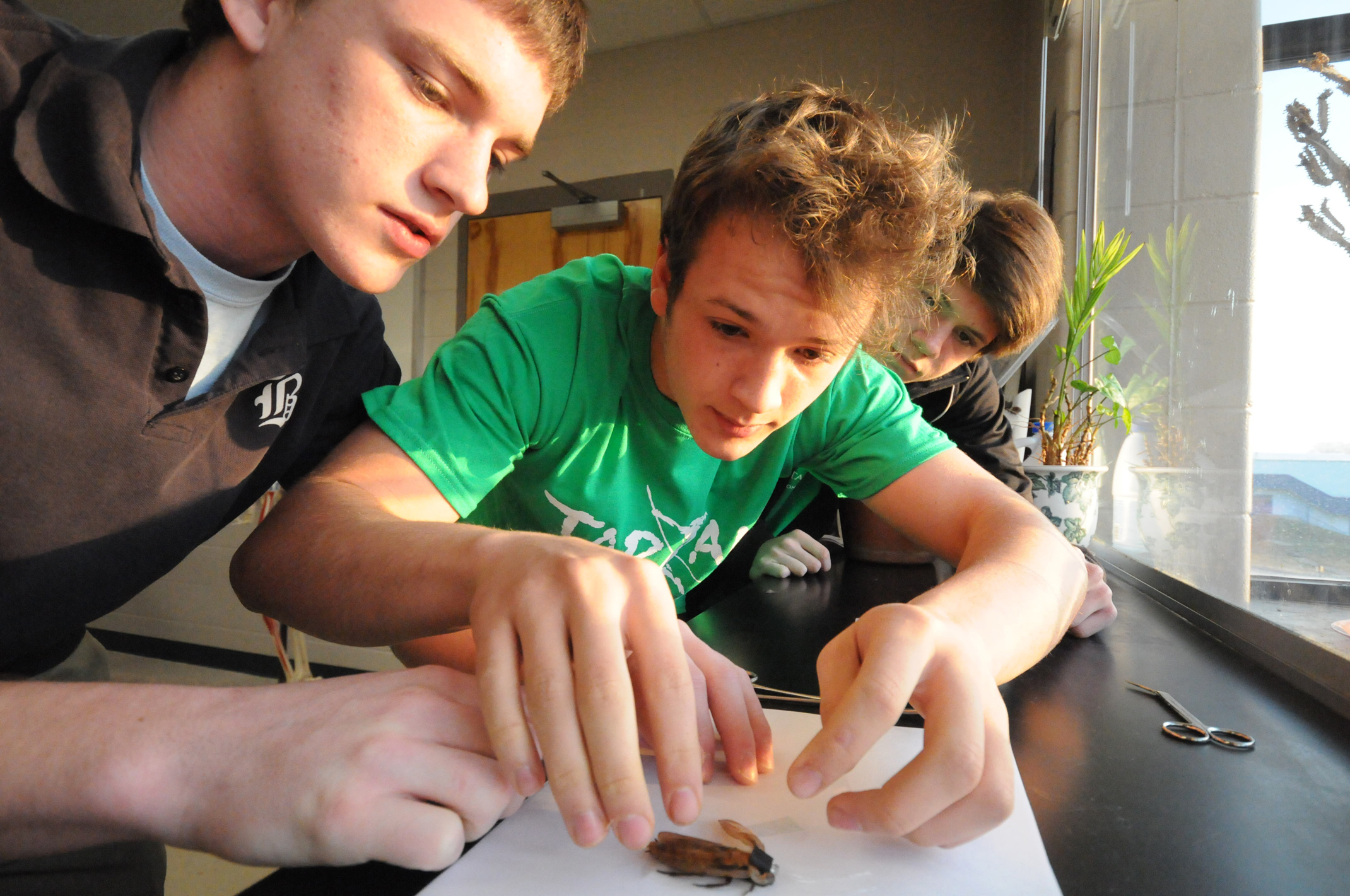Fifteen-year-old Brandon Spurling plunged a death's head cockroach into a glass of ice water to anesthetize it before performing surgery on the bug.
His goal was to take over the insect by using a remote control to stimulate its nervous system through implanted wires.
His teacher Jim Marlowe's goal was to teach students in his advanced placement biology class about the nervous system: If you stimulate the nerves, you can get a response.
Marlowe, a former microbiologist researcher turned Boyd Buchanan School teacher, got the idea of roach surgery from the Internet when he read about two University of Michigan graduate students who wanted to make neuroscience understandable and practical to students in high school.
The students on Friday had so much fun sending impulses to the cockroaches' nervous systems that Marlowe and other teachers had to encourage some to leave after the class ended.
Students like it so much because they have to perform surgery to get to the cockroaches' nervous systems.
All cockroaches recover from surgery, Marlowe said. There have been no deaths.
The first step is leaving the cockroach in ice until it stops moving. That's the roach's anesthesia, 16-year-old Kale Langley said.
Kale described the process while Brandon removed the bug from water and used a nail file to sand a wax covering off the back of its head so that he could glue a transistor to it.
They cut off a small part of the bug's antennae and put wires inside the parts remaining. Those wires touch the insect's nerves. The boys glued a circuit pack to the bug's back and used a remote control to send electrical impulses to the antennae, directing the bug.
They could make the bug do a dance if they wanted, said Marlowe.
But there's a more practical application for this kind of work, said student Jason Gambrell. In an earthquake or other event in which buildings collapse, cockroaches equipped with tiny cameras could be sent into the rubble in hopes of locating victims.
Marlowe said the bugs could be fitted with listening devices and used as spies.
Brandon, who says he wants to be a neurosurgeon, said this biology class exceeds his expectations.
"You get into a classroom to learn about the nervous system and you think you're going to learn about the different parts of the brain," said Brandon.
"When actually you walk in, you see a bunch of cockroaches and your teacher says 'Hey, let's remote-control some cockroaches.'"


